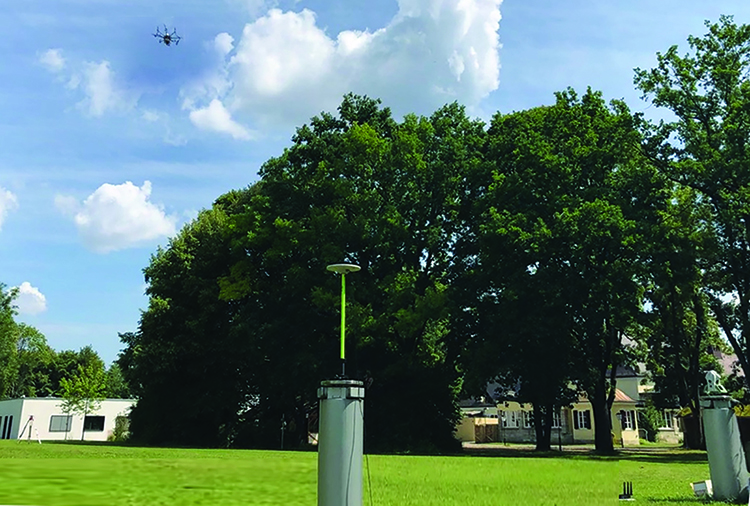In Part 1 of the GNSS Indoors column, we described our attempt to establish an indoor channel model that can be applied to GNSS signals. One of the major outcomes of the investigation of channel sounder data was the discovery of a significant dependency on the direction of the signal source. Hence, the azimuth and the elevation of the satellite became key parameters for the indoor channel model.
In Part 1 of the GNSS Indoors column, we described our attempt to establish an indoor channel model that can be applied to GNSS signals. One of the major outcomes of the investigation of channel sounder data was the discovery of a significant dependency on the direction of the signal source. Hence, the azimuth and the elevation of the satellite became key parameters for the indoor channel model.
The granularity of our indoor channel model introduced in Part 1 intentionally did not address the question of the diversified materials used in a building because one statistical model should be able to fit as many conditions as possible. Nevertheless, investigating different building materials with respect to their permeability of GNSS signals poses exciting prospects and will serve as a focus of this second part of the column.
The signal that results from an encounter with the surface of a building material can be divided into a part that is reflected at the boundary and a part that is transmitted through the material. Because the latter signal portion is more interesting in the context of indoor GNSS, we call the model to be developed the transmission model. In this second part, some results of the theoretical considerations will be presented as well as some practical test measurements. . .
. . .Conclusions
In the first of this three-part column, we presented a novel approach for a statistical channel model based on the well-known Saleh-Valenzuela model that has already been applied frequently in communications. Our approach was further enhanced by the fact that current elevation and azimuth of the satellite significantly affect the behaviour of the key parameters of the model that quantify the decay profiles.
Although the amount of data that we gathered was too sparse to be sure, it seems that the construction material of the building plays a minor role for the shape of the decay profiles. Of course, building materials affect the absolute power level of the signal to be received.
Thus, the second part of the column followed a more deterministic approach and started with an introduction on how the signal attenuation caused by a building can be computed on the basis of the dielectric properties of the materials with which it is constructed.
Simulations helped us understand what reinforced concrete really means to a GNSS signal. Furthermore, we introduced configurations of equipment and scenarios to measure relevant parameters of the building materials in order to fill the transmission model with practical input.
Having presented this synopsis on signal propagation through various types of building materials, in the third and last part of the column we will turn to a future scenario: the propagation of an actual Galileo signal as it penetrates a building. In the next issue of Inside GNSS, we will present and discuss our analysis of experimental results performed by broadcasting the real modulated Galileo pilot signal on L1 and L5/E5 and measuring its reception inside a building.
(For the rest of this story, including figures and graphs, please download the complete article using the pdf link above.)






